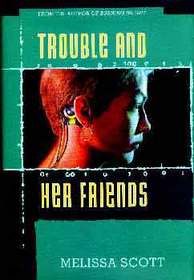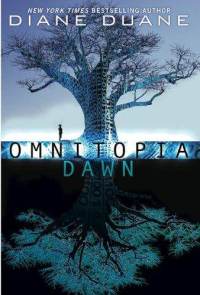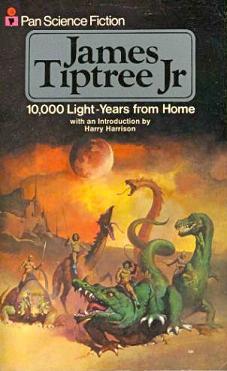
Spirit or The Princess of Bois Dormant
Gwyneth Jones
472 pages
published in 2008
So about halfway through Spirit, or The Princess of Bois Dormant, when the heroine is rotting away in prison on an alien world, forgotten by everybody, it looked like the novel was going to be a science fiction adaption of The Count of Monte Cristo. It wouldn’t have been the first; The Stars My Destination just being the most famous example of such an adaptation. But while the imprisonment of Bibi, Spirit‘s protagonist does consciously echo Dumas’ famous novel, including having an older mentor imprisoned with her who leaves her a fortune, it changes its mind almost instantly and doesn’t become a revenge story after all.
Which is for the best, as Bibi is no Edmond Dantès. Whereas the latter was unknowingly framed for a political crime for those he thought his friends, only discovering the truth years into his imprisonment, Bibi was just collatoral damage, not for the first time either. She had started live as Gwibiwr, the probable daughter of a (Welsh?) chieftan of the White Rock clans who’d long lived in rebellion against the one world government, a rebellion now crushed. Bibi herself is taken into the entourage of Lady Nef and becomes a minor servant, young enough to have lost most of her memories of before. She was therefore a victim of politics long before she was left ot rot in an alien prison for being part of a conspiracy against an emperor who hadn’t yet taken the throne when she had last been on Earth. And unlike Dantès, the people on which she could’ve had her revenge were mostly innocent bystanders as well.
I read my first Gwyneth Jones novel, Bold as Love back in February, as part of my Year of Reading Women project. It wasn’t a great success: the setting was dating, I had trouble getting used to Gwyneth Jones’ writing and I didn’t like the protagonists much. With Spirit I had much less trouble: less dated, better setting and a more likable if still somewhat passive heroine. Bibi mostly has no choice but to accept the circumstances she finds herself in and make the most of it, as she doesn’t have the power to do anything about it.
Once she escapes prison and finds the treasure her mentor set her up with and she re-emerges as the mysterious princess of Bois Dormant, she does have the power to change things should she want to, but by that time she’s content to remain in the background and manipulate events from the shadows. For the reader this means that it is sometimes unclear if she is responsible for some of the misfortune that happen to her enemies or whether these are just “coincidences”…
Like Bold as Love, Spirit starts slow, taking hundreds of pages to get Bibi into prison as we follow her from the time she was taken from the ruins of her clan’s cave fortresses in Wales, through her training as a servant to the Lady Nef and subsequent career as a civil servant, to the diplomatic mission she is part of which ends with her in prison. Until this point there doesn’t seem to be any plot going on, instead we just follow Bibi through her life and through her get a view of the society she lives in.
Which is somewhere in the far future with no obvious links to our time. Instead there are references to something called the Gender Wars, a first worldwide empire and a period in which the Earth was colonised by an alien race called the Aleutians, some hundreds of years previous and which has had the greatest impact in shaping contemporary society. What we see of it all seems vaguely Chinese though luckily not as orientalist as is the norm in science fiction. What impressed me as well was that Jones manages to make each of the major settings the story takes place in have their own distinguished cultures.
Spirit in the end is very much a book of two halves, the second half almost leaving Bibi behind in favour of other characters as she stays in the background manipulating events. As a whole it’s a bit unbalanced and as with Bold as Love I found it a bit meandering, but in the end I still enjoyed it.



